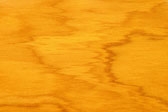
Cypress is the name given to a range of different species of conifer. Cypress is durable, stable and resistant to termites and insects, and offers a range of attractive colour options.

Image courtesy of WoodSolutions.
What is cypress?
Cypress is a wide-ranging term for a number of species of conifer that are found across the world. While technically a softwood, cypress has been used in construction for thousands of years due to its stability, durability and lasting good looks. Cypress trees also generate cypressene, a natural oil that acts as a preservative and insect repellent. The wood is very stable and resists splintering and warping very well, making it ideal for outdoor applications, although it can grow more brittle with time.
What does cypress look like?
Cypress displays an array of colours from a deep brown red to a more honey coloured grain, according to which species is used for the lumber. The grain can be highlighted with the application of a clear sealer or it can be left to weather naturally, approaching a dark grey over time. Cypress accepts paints and stains readily, which can open up opportunities for more colour variations.
- Long lasting durable softwood.
- Good range of colour variations.
- Naturally termite and weather repellent.
What is cypress used for?
Cypress wood can make for beautiful and low maintenance decks and pergolas. Being able to find a colour strain to match your needs is not generally an issue, and the wood’s natural ability to accept stains and paints further opens up its appeal to anyone looking to add a deck or pergola to their home.
|
Advantages
|
Disadvantages
|





